In May of 2022, Singletracks published a story about Mt. Hood Skibowl shutting its bike park down indefinitely after being hit with an $11.4M judgement in a case that involved a rider who was catastrophically injured while riding down one of the trails at the park. The verdict was both noteworthy and controversial.
Coincidentally, Nat Lopes, the trail builder I interviewed for a recent article on trail edits, was an expert witness for Owens’ attorneys. Both he and Rick Klingbeil, Owens’ lead attorney, gave us some very interesting insights about the case that shed light on why and how the jury reached its verdict.
I also offered Skibowl the opportunity to tell its side of the story, but no one from the resort ever responded to repeated requests for an interview. I noticed on its website that Skibowl is currently asking people to sign a petition urging the state of Oregon to pass liability waiver reform because “recent court rulings have effectively nullified Oregon liability waivers.”
In a statement on Skibowl’s website posted after the case, the resort wrote “In light of a recent unprecedented plaintiff verdict in a mountain biking lawsuit against Mt. Hood Skibowl, we have made the difficult decision to suspend all mountain bike operations for the summer of 2022. After 32 years without a serious mountain bike claim of any kind, the winds have shifted. Our industry has focused heavily on user education and operational best practices, while working hard toward mitigating risk where possible. Eliminating all risks with recreational activities—especially in downhill mountain biking through forests at high speed—is something that is just not possible.”
The details on Owens’ crash at Skibowl
According to Owens’ complaint against Skibowl, he was riding down Cannonball, a double-black diamond mountain bike flow and jump trail when he crashed in July of 2016. The trail had an average downhill grade of 17%. A half-mile from its entrance, the trail crossed a hiking trail, known as the “wedding trail.” At the crossing, there were signs mounted on 4″x4″ posts right next to the trail.
The complaint stated that riders would usually reach speeds of at least 30mph on Cannonball just before it crossed the wedding trail. Owens crashed just above the wedding trail crossing and slid downhill, hitting one of the 4×4 signposts. He was paralyzed because of the crash.
Owens’ crash was not due to inexperience. As Klingbeil told us, “he was an excellent rider and had been on the racers’ award podium many times in the past.”
Arguing negligence in the design and maintenance of the Cannonball trail
Klingbeil took on the case after another law firm referred it to him. Klingbeil has been mountain biking since the 1990s and is familiar with many of the trails in and around Oregon. He understands the inherent risk of the sport, but he doesn’t believe that its dangers excuse landowners from their duty to properly design and maintain trails.
“Mountain biking certainly poses more risk than many other sports and activities, but that is not an excuse for avoiding steps to bring the park or facility in line with the standard of reasonable care and safety within the industry,” said Klingbeil.
“If my client’s injury had been caused solely by the inherently dangerous nature of the sport, such as losing control on a properly designed trail and running into a rock or tree beside the trail, or colliding with another rider, or something similar, I would not have filed the case and would have urged my client to not file a case.”
In reviewing the case, Klingbeil found that “Skibowl developed the Cannonball trail from a service road previously used for powered vehicles to get to the top of the hill. It was a high-speed trail, with an abnormally steep slope, and Skibowl admitted that good riders often achieve speeds up to 50mph in the area at issue. All of that would have been fine if the trail had been designed and maintained properly.”
Skibowl’s waiver did not absolve it of all liability
Klingbeil explained that “the Oregon ski statute, ORS 30.985 – Duties of Skiers, defines any person who rides a ski lift as a ‘skier.’ That includes mountain bike riders. Mountain bikers, as well as skiers and snowboarders are subject to that law.” According to Klingbeil, the law prevents lawsuits that result from the “inherent risks” of skiing or riding on the mountain. That would include risks and injuries solely from the “inherent dangers” of the sport.
However, Klingbeil told me that the law does not excuse the park operator from a lawsuit for injuries caused by its negligence. In Klingbeil’s opinion, Oregon legislators have worked out a careful balance between insulating park operators from nuisance suits and protecting park guests from a park owner’s negligence.
To prove negligence, Klingbeil enlisted Lopes as an expert witness

Klingbeil chose Lopes to be the expert witness for his legal team because “we wanted someone with significant design experience, who would also challenge us on any parts of our case that were not in line with reasonable design criteria used in the industry. We also wanted someone who did not have a mindset of ‘hyper safety.’ By that, I mean someone whose philosophy was based in the real world of practical mountain bike park design, and the realization that no trail or park can be totally safe or of perfect design.”
Lopes had worked on a few prior cases when Klingbeil contacted him. According to Lopes, Klingbeil retained both Lopes and another trail builder whose job was to vet Lopes’ opinions in the case. It was a tough assignment for Lopes because the prevailing view of trail builders at that time was that they should not help plaintiffs’ attorneys.
Lopes agreed to work for Klingbeil because the risk factors in the case were so clear and could have been mitigated so easily. He said that he has always been an “advocate for rider safety” and that “I always think about what I would want as a rider myself and what I would want for my friends and family.” While the other cases he worked on were settled out of court, this was the first trial Lopes had been part of and the experience was super intense and dramatic.
“The defense attorneys had a dedicated staff person with a whole computer system set up to access all their files in real time.”
With Lopes’ help, Klingbeil had some incredible exhibits prepared, including 3D forensic reconstructions and human factors reports.
The three main problems with the Cannonball trail
In Klingbeil’s experience as both an attorney and an engineer, most injuries are the result of several concurring problems or hazards. In the Owens case, Klingbeil and Lopes argued there were three design defects in the Cannonball trail. Taken together, the defects combined to cause Owens’ crash and resulting injuries.
Signposts
The first design defect Klingbeil and Lopes focused on was the placement of the 4×4 wooden signposts immediately adjacent to the trail in the area where Owens crashed. The signposts were within 4-6 feet of the trail at some parts, well within an area where riders could easily strike them during an anticipated crash.
Klingbeil noted that “Ski Bowl did not use 4×4 posts anywhere else within its park adjacent to any trail that allowed riders to develop any speed. They instead used thin wooden or carsonite breakaway posts that would easily break away when hit.” Klingbeil noted that, at trial, Skibowl’s expert witness even admitted that he would not use 4×4 wooden signposts close to a high-speed portion of a trail.
Lopes said Skibowl could have set the trail crossing signs further off the trailway and used the same breakaway or bendable signposts that were used everywhere else on the mountain and that, if they had done so, Owens’ injuries certainly would not have been as severe. As Klingbeil told me, “Absent the 4×4 posts, he likely would have slid to a stop, got a few cuts and bruises, and continued riding.”
Drainage ditch
The second defect Klingbeil and Lopes found was the placement of a drainage ditch across the trail.
“While most parks incorporate a variety of water management features such as swales or underground pipes, we found none that used what was essentially a 24-inch wide, 6”-12”-deep ditch crossing the high-speed portion of a trail.” Additionally, at trial “Ski Bowl’s former maintenance employee testified that similar ditches on Cannonball uphill from this one (which were at lower speed portions of the trail) had been replaced with underground pipes a few years earlier and had functioned well and without issue.”
Lopes noted that Skibowl had installed all the other drainages on the trail using buried pipes. If they had done the same thing in the area of the accident, there would have been no issue with riders getting bucked at high speed. Lopes mentioned that it was revealed through the discovery process that the trail crew manager had procured a pipe, prepared a maintenance task plan, and asked Skibowl’s bike park manager for permission to fix the drainage several times prior to Owens’ crash, but the bike park manager didn’t approve it.
Klingbeil stated “there was no reason that a buried pipe or even a moderate swale could not have been used instead of the ditch. After my client’s injury, Ski Bowl apparently eliminated the ditch and presented photos at trial showing a moderate and far safer swale like that used by most parks within the US.”
Lopes helped Owens’ attorneys create a life-sized cross section of the drainage dip that ran across the Cannonball trail for trial, along with a drainage pipe and cover to demonstrate how easily the risk could have been mitigated.
The wedding trail
Finally, according to Klingbeil and Lopes, Skibowl’s placement of a pedestrian trail (known as the “wedding trail”) near the Cannonball trail also increased the risk to riders. Klingbeil stated “there had been several close calls where riders were coming through this area at high speed and had near collisions with people attending weddings. Tall trees often cast dark shadows over that area of the trail, adding to the hazard created by the crossing.”
Klingbeil said that, after Owens’ crash, “Skibowl abandoned and blocked off the wedding trail, and re-routed traffic to a safer location for both pedestrians and mountain bikers. When the trail moved, they also removed the 4×4 posts, as they were no longer needed.” In Klingbeil’s opinion, “if that one simple task had been done timely instead of putting it off year after year, there would have been no 4×4 posts in place to break my client’s back, and this would not have happened.”
The design defects were symptoms of a bigger problem at Skibowl
For Klingbeil and Lopes, the presence of the three design defects on Cannonball stemmed from Skibowl’s failure to have an adaptive risk management policy. Lopes explained that “an adaptive risk management policy is where you gather data [on injuries], review the data periodically, and assess whether you need to make changes to reduce risk.”
Lopes said that during the discovery process, it was revealed that Skibowl had no system in place for tracking where accidents and injuries were occurring on their trails which meant they had no way of understanding, accessing, or mitigating risks to riders.
Skibowl’s attitude toward risk reminded Lopes of the infamous Action Park in New Jersey. To illustrate this point, Lopes told me that, when he did his site visit to Skibowl, he observed a medical tent set up at the base of the mountain with a constant stream of injured guests getting bandages and ice packs applied to all kinds of injuries. Lopes, who has visited more than 60 lift-accessed resorts across North America, had never seen anything like it.
As Klingbeil put it, “their method of tracking what type injuries of occurred and where was beyond appalling. We obtained several years and hundreds of pages of incident reports from their files. For all but a few, Ski Bowl’s personnel were unable to provide any details of where on the trail the injuries occurred, what caused the injury (other than a generic ‘crash’ or ‘hit rock’), or whether any investigation or changes were made in response to the reports.”
Klingbeil hopes the Owens verdict will benefit all riders

Klingbeil told us that, “as with most of my cases, the hope is to change behaviors and prevent future injuries from the same type of mechanisms or problems. We often see that when businesses believe they are protected from liability, they pay far less attention to safety. I believe that was the case here. At least two other riders had suffered serious injuries at the same area of Cannonball in the past, with one requiring a life flight and causing the end of his riding career, yet Skibowl didn’t make any changes in response to those injuries.”
Additionally, Klingbeil thinks other bike parks can learn three valuable lessons from the case. “First, having a release of liability does not insulate you from the responsibility to maintain a safe park. Second, that mountain bikes, equipment, and riders’ styles and abilities have changed significantly over the past few decades, and that it may be necessary to re-evaluate their parks periodically to determine if their trail system and safety measures are still sufficient considering these changes. Third, that a system of tracking the location and circumstances of injuries within their park is important and can help them discover unsafe features or areas that need to be addressed.”
Klingbeil told me that all bike parks can reduce their risk of liability by doing two simple things. First, “retain a qualified and experienced mountain bike park designer when creating a facility or adding trails, and periodically evaluate and address areas within the park that are the source of recurring injuries.”
Second, “don’t put profits over the safety of riders. It’s tempting to put off necessary maintenance and changes to save money, but when a park does that and a severe injury occurs, they should not be allowed to dodge liability or point their finger at the rider.”
The Owens verdict has affected both Klingbeil and Lopes personally, in addition to Skibowl’s operations
Winning the Owens case has not been a completely positive experience for Klingbeil and the other attorneys involved in the case. He told us that “our team has received death threats, as well as other threats from people upset about the verdict. I am not that concerned about the threats to me, but my client should not have to go through that in addition to being paralyzed for the remainder of his life.”
Lopes has continued to be an expert witness working on behalf of both plaintiffs and defendants and feels it is an extension of his work and affiliation with the International Mountain Bicycling Association, the National Recreation and Park Association and the Professional Trail Builders Association to promote best practices in the industry. The Owens case made him “much more conscientious about things I design and recommend as a trail builder, as I better understand the tragic real-life consequences and legal liability at stake.”
Currently, there is nothing on Skibowl’s website indicating it will resume mountain biking at the resort after canceling it last year. It is also unknown if Skibowl has made any changes to the way it manages risk at the resort after the Owens verdict, including implementing an adaptive risk management policy like Lopes recommends.



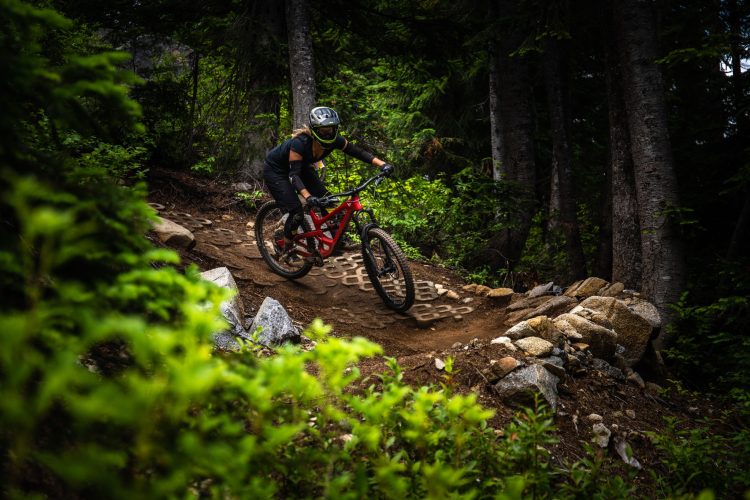


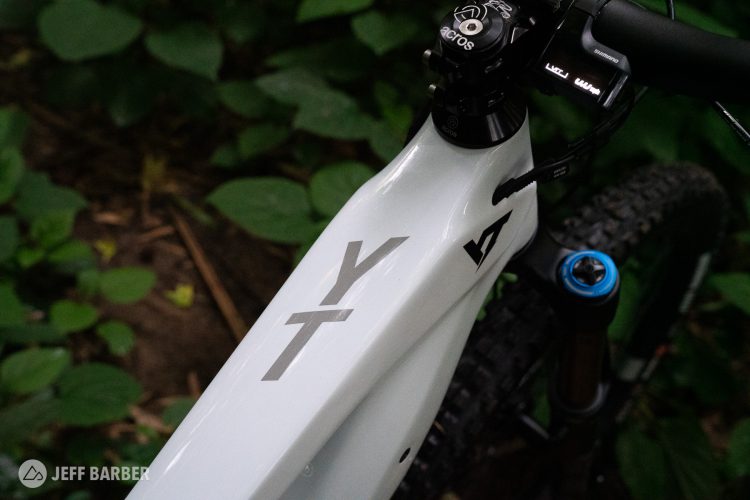
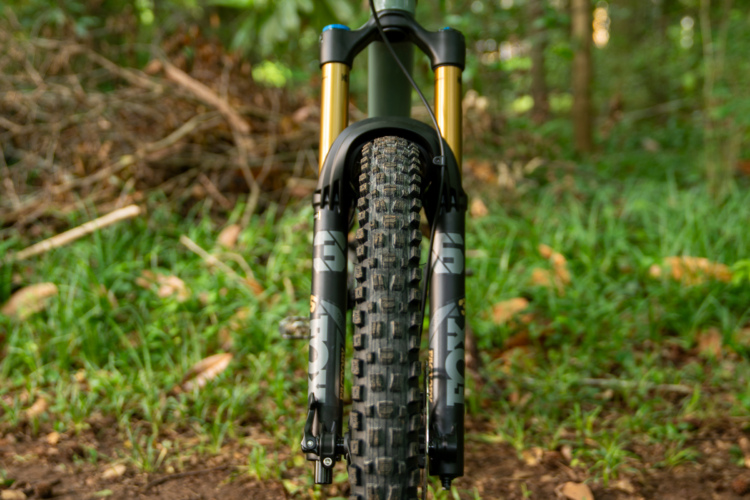
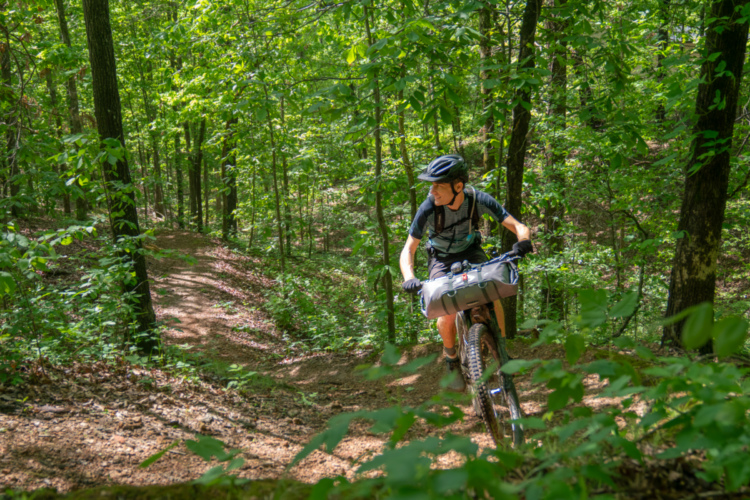
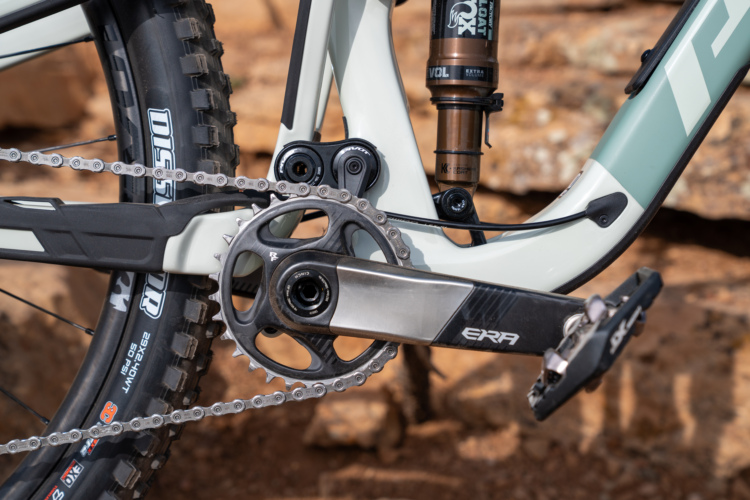

36 Comments
Mar 14, 2023
Mar 15, 2023
Mar 19, 2023
Let's call it the UBC (Uniform Bicycle Code)
Richard, I have to say, you did a good service in writing this article and putting the situation into perspective.
It does take two to tango... Park and rider
Mar 15, 2023
Jun 16, 2023
Mar 18, 2023
Mar 15, 2023
This kid should be suffering his own demise due to his own excessive speed and not knowing the trail. Did the park or trail system post a minimum speed?
How many times have I had to slip past a tree? Too many. Had some close calls. Who do I sue? Mother Nature?
It sucks he is hurt. I don’t wish it on anyone. But be a man and own it.
Jun 16, 2023
Mar 15, 2023
Mar 17, 2023
Reportedly, Owens was an experienced rider who made the podium many times. That takes serious commitment to building stamina and skill; something like riding 3-5 times per week for 1-3 hours per ride and mixing in 100-mile road rides to enhance endurance. You have to ride crazy fast over obstacles that scare the f**g s**t out of ordinary riders. This accident took place toward the end of Cannonball Trail. On the way down Owens cleared a number of jumps and other obstacles but he lost control going over a recess where water crosses the trail. Since water runs downhill and bike trails go across hills, this is a common feature on many mountain trails and one that I suspect was well within Owens skill level. So, why did he crash? Why do any of us crash going over obstacles within our skill level, including ones we have successfully traversed many times before? That’s mountain biking. It’s dangerous. A split second of inattention at the wrong moment and crash!
Granted; the 4x4 sign post placement was dumb. Plaintiff’s counsel argued that hitting the post caused the injury while defense counsel argued Owens going over his bar and into the ground caused the injury. Which was the truth? What if that pole had been a tree? What if the pole wasn’t there and Owen just crashed into the rock bed next to the pole? Jurors can base their decisions on sympathy alone, if they choose. Who doesn’t have sympathy for Owens? It’s easier to favor a human being who is clearly suffering over some entity with no human face and very likely the entire jury pool felt terrible about Owens’ condition regardless of his own contributing negligence.
The Wedding Trail placement was also dumb but that has nothing to do with Owens crashing and everything to do with plaintiff attorney “reptile theory” jury manipulation to leverage a nuclear verdict.
The real problem. Participating in adrenalin sports (skiing, skydiving, scuba, MTB…) is gambling with safety and inevitably, some of us get bit. Plaintiff attorneys eagerly await the opportunity to spend a relatively minor amount of time to bankroll millions of dollars. All they need is a sympathetic client vs a non-human entity that has a big insurance policy. Plaintiff attorney’s typically pocket about 40% of the judgment (so, about $4M in this case). In the press these attorneys masquerade as champions of accountability yet remarkably few really try to improve anything before that 40% carrot comes into play. Do you think Skibowl is paying the judgement? Think again; you are. This is just one claim in a recent shift of entitlement perception that is plaguing our legal system. Insurance pays the nuclear verdicts. In turn, businesses pay much higher premiums, the cost of which they pass on to consumers through higher prices for goods and services. In some cases, employers are bankrupted or vacate the area thereby raising unemployment and poverty while reducing competition which leads to monopolistic price increases from the surviving entities, which widens the gap for the impoverished. We all pay the price. Freedom is not free. The freedom to enjoy adrenalin sports is paid for in injuries. Yes, I value my freedom to choose for myself that much. This really is nothing compared to the price of that freedom fight that began with “no taxation without representation.”
Another problem is the shift from self-responsibility to thinking that one’s own wellbeing is the responsibility of everyone else. Plaintiff attorneys have gotten rich off this idea. Cannonball is a double black diamond trail. Actually, it looks like one of the least technical, easy-rolling double black diamonds I have ever seen. Regardless, the designation is there to loudly communicate that a high level of skill and caution are warranted; if you take this trail, you are knowingly assuming this risk; the level of caution you apply is your choice. Respect the double black diamond.
In the end there are many things both sides could have done that would have yielded no injury. Holding the park wholly responsible is wrong and we all pay with higher prices, loss of freedom to do activities of our choosing, and life spiral toward a dumbed-down, ultra-safe litigious world where plaintiff attorneys make fortunes staging and exploiting victims. Barf!
Mar 19, 2023
Meanwhile, Skibowl calls Lloyd's of London and files a claim.
Mar 17, 2023
Mar 17, 2023
Mar 18, 2023
Mar 17, 2023
Mar 15, 2023
The cases that really bother me are when free access is provided. The Air Force allows free public access to a trail where I live. They had a large judgment imposed against them a few years ago when a mountain biker got hurt on a section of trail that had washed out. They still allow access thankfully, but a lot of other private landowners in the state closed access to trails after the ruling.
Mar 16, 2023
Mar 19, 2023
The good news, there's nobody to sue, the rider is on his/her honor.
Without the bar ditches, the trail erodes to an unusable state every spring with snowmelt and late summer's monsoon season to add to that erosion.
Mar 18, 2023
Mar 14, 2023
Mar 14, 2023
Mar 14, 2023
Mar 14, 2023
Mar 18, 2023
Mar 18, 2023
Mar 18, 2023
Mar 14, 2023
If you haven't seen the documentary on Action Park you should. It's amazing.
Mar 18, 2023
May 17, 2023
You do go at a very good clip going through there. But anyone worth their salt knows what a drainage ditch does and they are easily visible. Going into a shaded section from a full sun, anyone that knows what they're doing knows that you need to slow down so you can see what you're going through. I have personally wound up in the trees next to wedding trail due to my own hubris. I have also catapulted off the log drop again, due to my own neglect and keeping myself in control. I have blown the burns at the top of cannonball, shredded my legs on the intro trail etc etc etc. The bike that the client was riding was also not properly spec'd and had modified components which altered its geometry to handle high speed. It wasn't a modern downhill race sled that is meant for that trail. Yeah the guy May of podium, but what class? Cat 3, beginner? Just because you have podium doesn't mean that you're a good writer there needs to be context to the content of what is being said. The short of it is this guy was riding above his skill level with a clapped out bike and didn't pre-ride and entropy bit him.
Now, the wedding trail there is sketchy as f*** and I have had close calls. That's why they rerouted it. Enough of the racers complained. The 4x4s, that's sketchy as well. But hardly the least dangerous thing on that mountain for riding.
I've helped people off that Hill that have broken ribs arms and torn open their ball sacks from failed seatpost rails on their bikes.
As another person said, it takes two to tango. Enter in entropy, and a little bit of hubris and everyone else is affected. Hopefully other bike parks will see this as a lesson and never let it happen anywhere else because of, people, lawyers, our absurdly expensive medical system which requires lawsuits to pay for the American people to get healthy again after injury.
Mar 18, 2023
One of two things were true with regard to Mr. Owens. Either he had never ridden this trail before and had no idea what the trail was like. Or, he had ridden the trail. Now, I'm not a prize winning MTB racer like Mr. Owens, but one reason I'm still around and able to ride my bike is because I would never ride down a mountain at full speed having never ridden the trail before. And, if I knew there was a big ditch across the trail right where a bunch of walkers are likely to be meandering aimlessly across the bike trail with their heads up their behinds, I'd be prepared to not just slow down but be fully prepared to come to a full stop when I got to that spot. Just in case.
Like someone else mentioned, it's a bit of a reach to complain about 4x4 posts being on a mountain trail when the trail is largely defined by 6" - 24" trees. Again, if I had ridden the trail before I'd probably have slowed down if the odds of smacking one of those posts were a bit high.
But, I grew up in a different world. We didn't have designer trails. We just rode wherever we could. Self-preservation was usually a very adequate replacement for waivers, trail designers, and breakaway signposts.
Foolishness and hubris, however, will defeat just about any safety measure ever devised.
I prefer having the option to do dangerous and risky things my way, assuming the risk myself and not attempting to put the blame for my errors in judgement on a corporation with deep pockets.
Mar 19, 2023
Apr 14, 2023
https://www.singletracks.com/mtb-trails/wisconsin-resort-drops-bike-park-due-to-insurance-costs-big-nevada-trail-network-is-in-the-works/
This is the beginning of the end folks...the exact same thing happened with skateparks in the 80s. Even if you believe that the ski bowl incident was the park operator's falult and not the rider's, the question you need to ask yourself is, are you okay with all of the bike parks going away? If not, how do we solve this? Because you can't have your cake and eat it too. Just because you're paying for something doesn't mean it's totally safe and you're not responsible for your own safety. If you think I'm wrong, sit back and watch what happens in the next 5 to 10 years. I really hope I'm wrong but, something has to change or this will play out where insurance companies keep raising the rates and either parks go out of business / stop running the lifts in the summer for bikes, or raise the rates so much that it's stupid expensive.
Mar 16, 2023
May 9, 2024
Mar 16, 2023
Mar 17, 2023